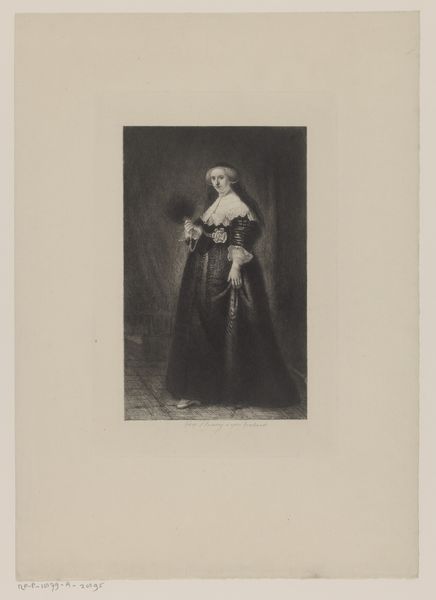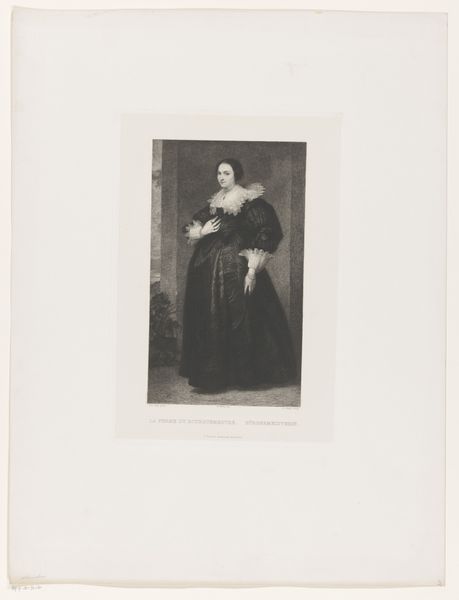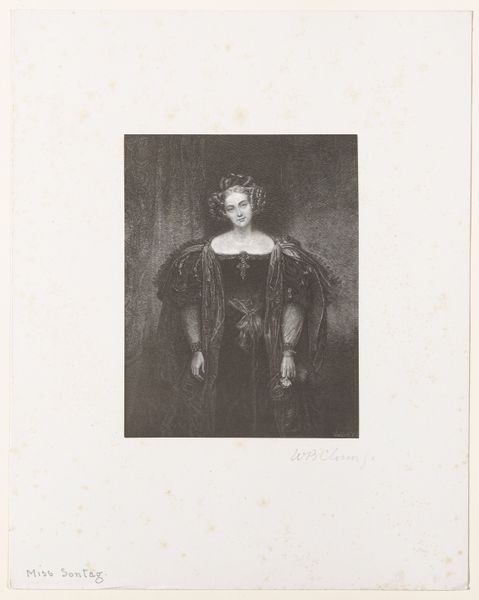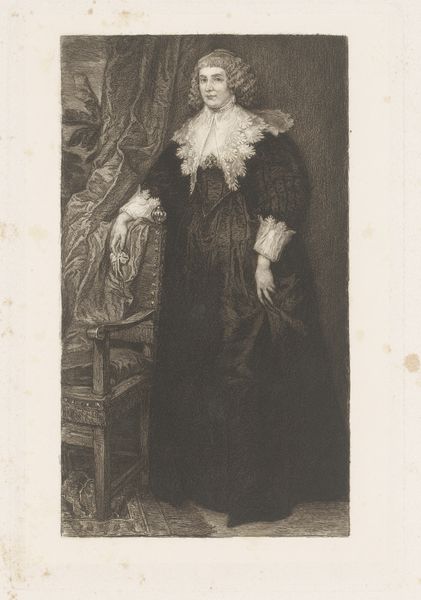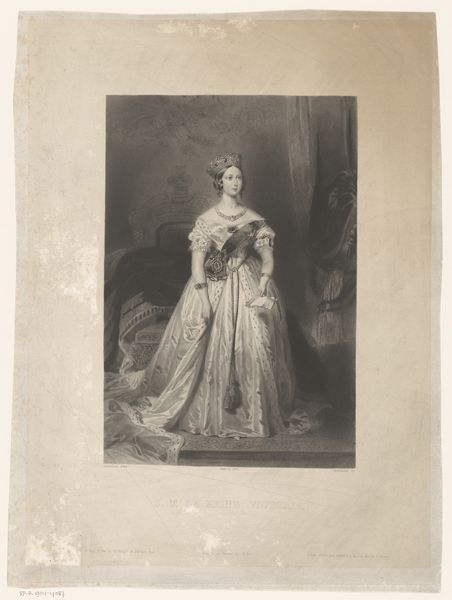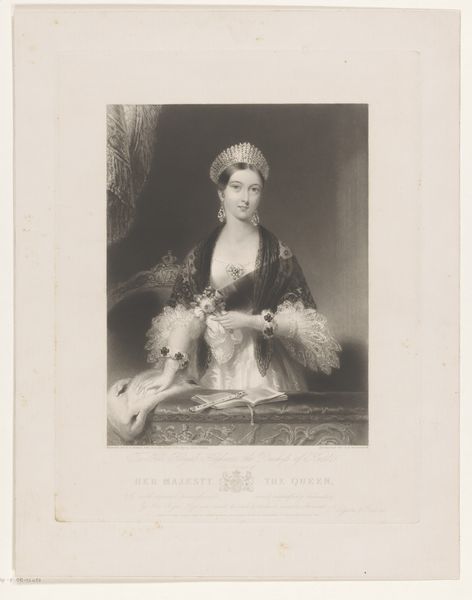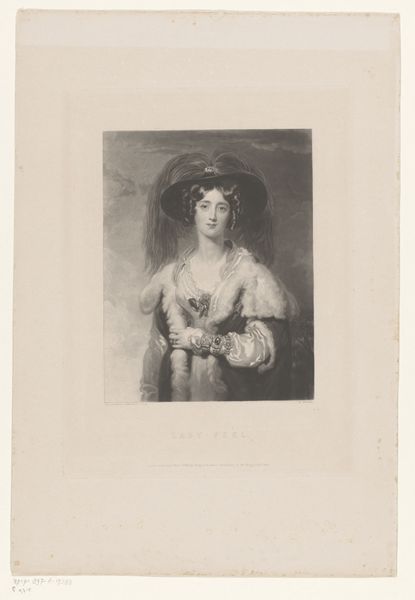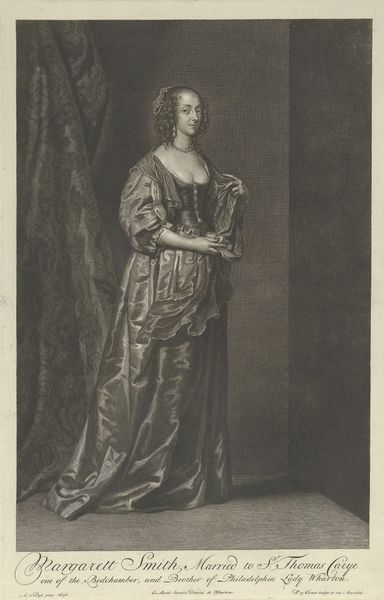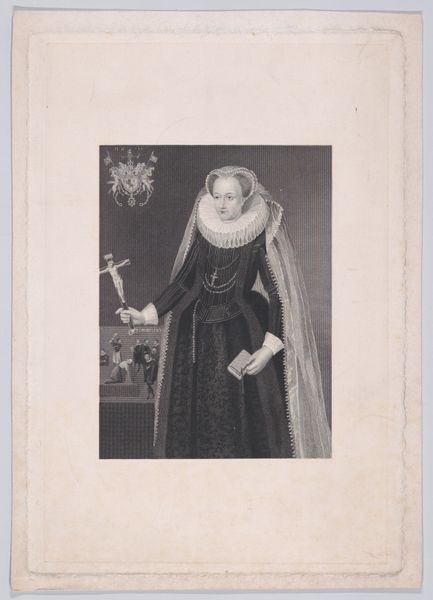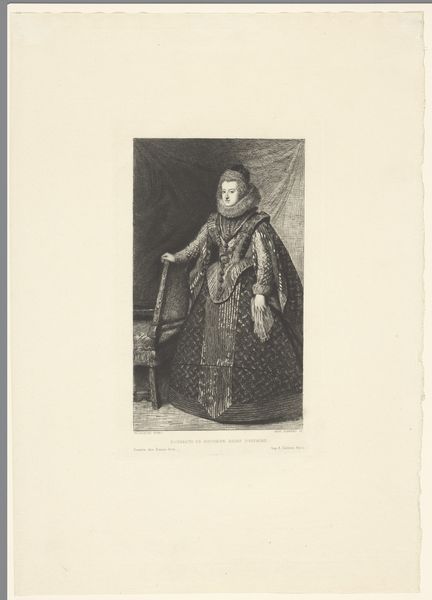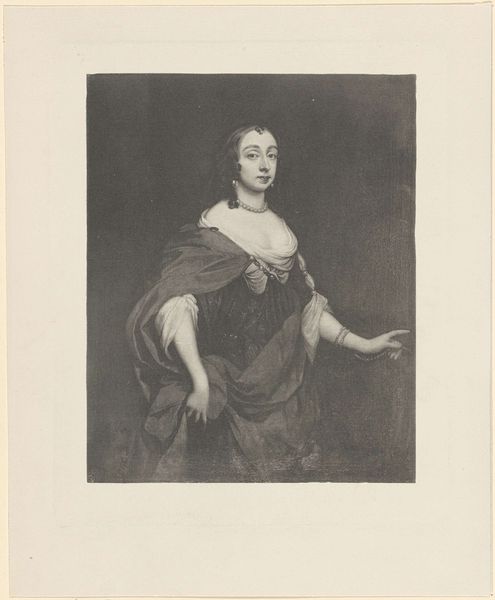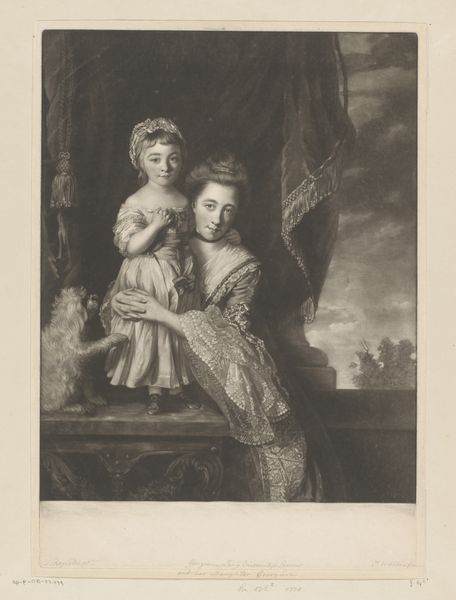
print, etching
#
portrait
# print
#
etching
#
genre-painting
#
academic-art
#
realism
Dimensions: height 596 mm, width 398 mm
Copyright: Rijks Museum: Open Domain
Editor: So, this is Charles Albert Waltner’s etching of "Portret van Oopjen Coppit," dating from around 1883 to 1885. It's a striking portrait, quite somber, almost imposing in its stillness. How do you interpret this work? Curator: For me, this image is a fascinating document of societal expectations placed upon women of privilege. Waltner is rendering a portrait of a woman from a bygone era, carefully mimicking the styles and codes of dress from the Dutch Golden Age to comment on late 19th-century societal norms. What does this layering suggest about women's roles across time? Editor: So, you're saying that it’s more than just a portrait, but also about the performance of femininity and status? Curator: Precisely. Note how Oopjen’s dress, her pose, her almost hesitant gaze, conform to established ideals of female virtue and restraint. What I wonder is, in evoking that earlier style, is Waltner celebrating or critiquing those standards for the late 19th century woman? Editor: That’s an interesting tension. On the one hand, it could be a celebration, almost nostalgic. But it also hints at the constricting nature of those expectations. Curator: Absolutely. Also, consider the genre-painting context mentioned in the metadata; it suggests a focus on everyday life but perhaps through a lens that subtly questions the limitations imposed on women. Think of all the ways class, race, and gender affect what art gets made and who it’s for. How might the accessibility of printmaking change this dynamic? Editor: I never really thought about portraits being a statement about society. I'm understanding it in a new way. Curator: That's the power of art – it encourages us to critically examine the narratives we’ve inherited and perhaps reshape them for ourselves.
Comments
No comments
Be the first to comment and join the conversation on the ultimate creative platform.
